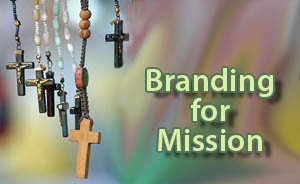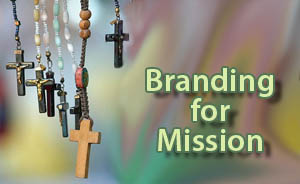 Whew! We got the Mission Statement out of the way!
Whew! We got the Mission Statement out of the way!
Now what?
Now the work begins. The Mission Statement is an accomplishment. But if you want it to be effective in your ministry, you must start using it.
The Mission Statement is always in danger of becoming trite or taken for granted. You must keep the Mission Statement alive.
Start using the Statement immediately!
- Publish it on the website,
- Recite it in worship,
- Print it on stationery,
- Have a temple talk about it,
- Read or recite it before every governing meeting.
A press release should be written and sent to local papers. Write about the process, quote the people involved. Have them answer questions such as, “How do you think the mission statement will affect your ministry?, How does it reflect your history?, How will it make a difference?”
Make a video montage of your members discussing their mission and post it on YouTube, linking it to your website. Break them into short videos and post them on Facebook. (Videos attract traffic more than any other type of post.)
Make a greeting card with the mission statement. Set the words in nice type and use a photo of your church or sanctuary. Send it with a welcome note to visitors.
(Use a service like sendoutcards.com, which allows you to use your own photos to create professional quality, custom cards. You can register with 2×2’s vendor number 85519. Call or email us and we’ll walk you through the process the first time. It’s easy and inexpensive!)
Sounds like a lot of work! But the work is just beginning.
The Mission Statement must be APPLIED to your ministry.
This might seem like a boring proposition. “How long are we going to dwell on this?” But it can bring your ministry alive!
Mix it up! Plan special sub-emphases and celebrate them on a monthly, quarterly, or seasonal basis (calendar or liturgical).
Examine your statement. How does it affect the various emphases of parish life?
- worship
- witness
- education
- evangelism
- social ministry
- fellowship and
- stewardship
 You can add biblical concepts to this list
You can add biblical concepts to this list
- Our mission and faith.
- Our mission and justice.
- Our mission and reconciliation.
- Our mission and our community.
Emphasize one of these for the period of time you’ve decided on. Rotate the topics.
- Make one Sunday each month Mission Sunday and choose hymns and prayers that complement your Mission as it relates to the special emphasis.
- Ask each committee of your congregation to plan an activity or event around the emphasis.
- Preach about it.
- Create content for your web site or newsletter that addresses the special emphasis.
- Adopt a service project that complements the emphasis.
- Have the congregation memorize a hymn which complements the emphasis.
- Hang banners in the narthex, sanctuary and over the main door that point everyone’s attention to the special emphasis.
- Every time the emphasis changes, celebrate it. Write a press release. Keep your mission in your community’s consciousness.
The Mission Statement begins to define your mission. It creates a structure that motivates your congregation and shapes your ministry. The Mission Statement becomes a working document, a blueprint for your ministry — exactly what it is meant to do!








